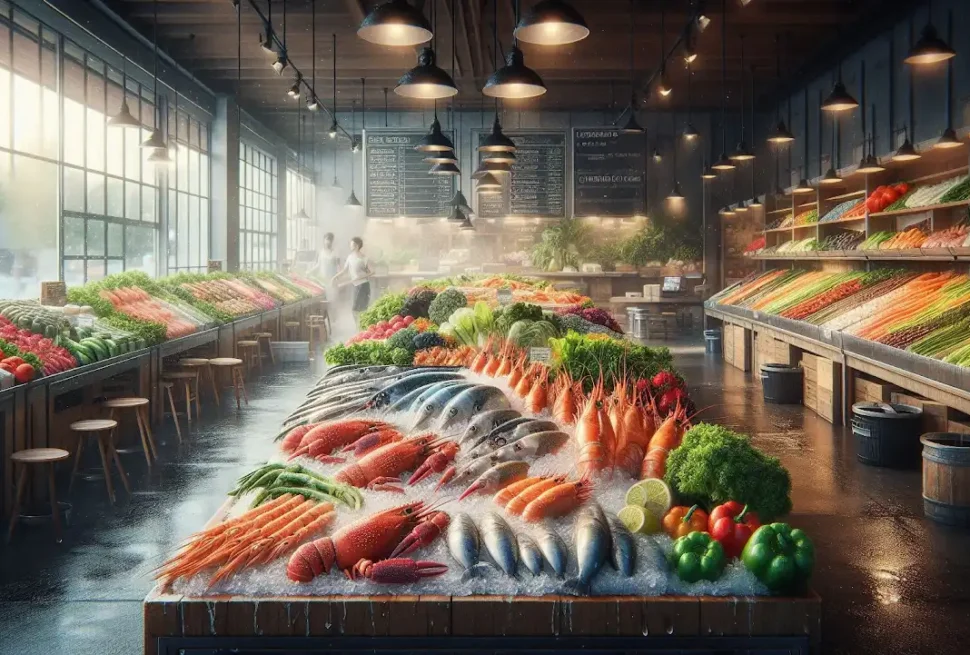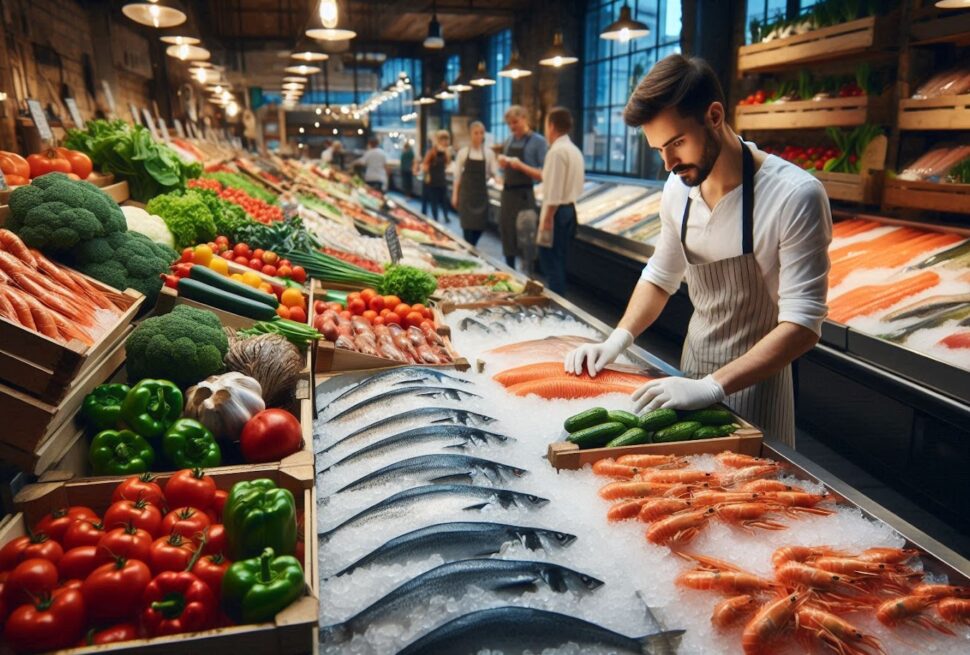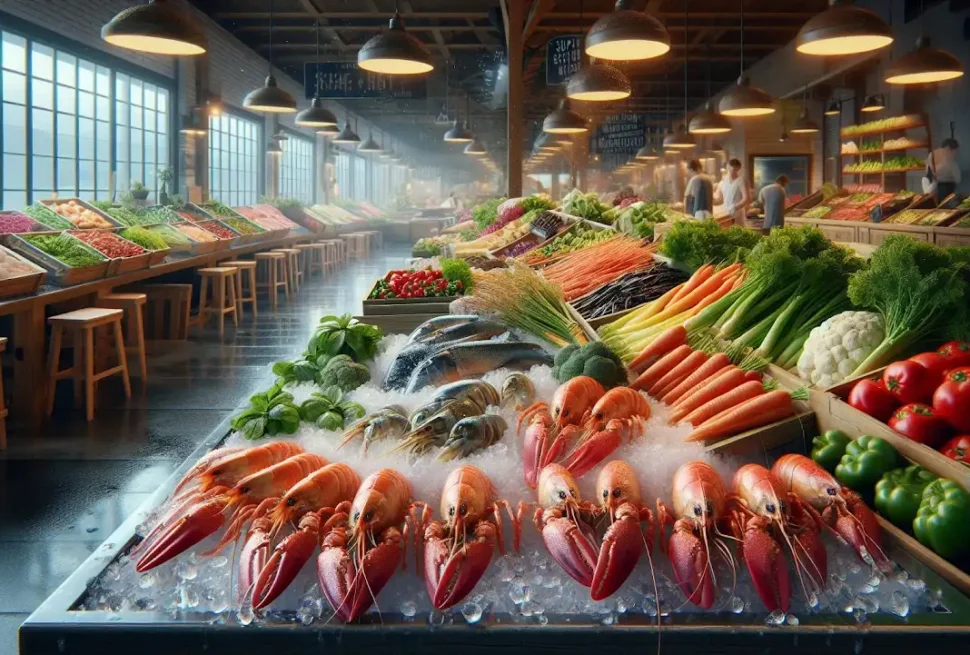Waterfront Living Meets Culinary Excellence: Dubai’s Premium Real Estate Proposition
Dubai’s coastal properties have long been synonymous with luxury living, but their proximity to the emirate’s bustling fresh seafood markets adds an unexpected layer of value for discerning investors. The traditional fish markets, known locally as ‘fish souqs,’ have evolved into sophisticated commercial hubs while maintaining their authentic charm and cultural significance. This symbiotic relationship between premium real estate and gastronomic heritage creates a unique investment proposition that extends beyond conventional property metrics.
The integration of modern coastal developments with Dubai’s maritime heritage has created distinctive micromarkets where property values consistently outperform inland alternatives. Recent data from the Dubai Land Department reveals that properties within a 1-kilometer radius of major seafood markets have demonstrated 15% higher appreciation rates compared to similar properties in other waterfront locations. This phenomenon is particularly evident in areas surrounding the Deira Fish Market, Jumeirah Fishing Harbour, and the newly developed Waterfront Market.
Studies conducted by local real estate analytics firms indicate that proximity to fresh seafood markets significantly influences buyer decisions, particularly among high-net-worth individuals from Asian and European markets. The combination of luxury waterfront living and immediate access to world-class seafood establishments has created a niche market segment that shows remarkable resilience during economic fluctuations. Property developers have begun incorporating dedicated seafood retail spaces within their coastal projects, recognizing the growing demand for integrated lifestyle amenities.
The cultural significance of these maritime neighborhoods extends beyond mere convenience, fostering vibrant communities where traditional fishing heritage meets contemporary luxury. This unique blend has attracted a diverse demographic of investors, from restaurant entrepreneurs to lifestyle-focused end-users, contributing to the area’s economic vitality and social fabric. The sustained demand for these properties has prompted urban planners to prioritize the preservation and enhancement of historical fishing harbors alongside modern development initiatives.
Maritime Heritage Meets Modern Investment: The Hidden Gems of Dubai’s Coastline
The transformation of Dubai’s traditional fishing villages into premium real estate hotspots represents a masterclass in sustainable urban development. Historical fishing communities like Al Sufouh and Umm Suqeim have maintained their authentic character while accommodating luxury residential projects that capitalize on their proximity to both the sea and traditional markets. This careful balance of preservation and progress has created unique investment opportunities that appeal to both cultural purists and modern luxury seekers.
Property analysts have identified a distinct correlation between the operational hours of seafood markets and the rental yields of nearby residential units. Buildings within walking distance of 24-hour markets command premium rents, with some properties achieving yields up to 2% higher than the area average. This premium is particularly pronounced in developments that offer direct access to private beaches and dedicated paths to market facilities, creating a compelling value proposition for investors focused on recurring income.
The impact of seafood market proximity extends beyond residential properties to influence commercial real estate dynamics. Restaurant operators and hospitality groups actively seek locations near these markets, driving up commercial property values and creating additional investment opportunities. The spillover effect has led to the emergence of specialized food and beverage clusters, further enhancing the area’s appeal to both residents and tourists.
Recent infrastructure improvements, including climate-controlled walkways and dedicated transport links, have strengthened the connection between residential developments and seafood markets. These enhancements have not only improved accessibility but also contributed to property value appreciation, with some locations recording capital gains of up to 25% following the completion of such projects.
The Economics of Seaside Investment: Beyond Traditional Metrics
Understanding the economic implications of investing near Dubai’s seafood markets requires analysis beyond conventional real estate metrics. These properties demonstrate unique value appreciation patterns influenced by factors such as market operating hours, seasonal fishing regulations, and tourism cycles. Data from leading property consultancies indicates that properties within the “golden radius” of premium seafood markets experience 20% lower vacancy rates compared to similar properties in other locations.
The investment landscape is further enriched by the emergence of specialized commercial opportunities. Property investors have successfully capitalized on the growing demand for seafood-focused retail and dining concepts, with some mixed-use developments reporting commercial space occupancy rates exceeding 95%. This high demand has created opportunities for strategic property portfolio diversification, allowing investors to balance residential and commercial assets within the same maritime-themed micromarket.
Market analysis reveals that properties near seafood markets demonstrate stronger resilience during economic downturns. During the 2020 market fluctuations, these properties maintained 85% of their pre-pandemic values, compared to the 70% retention rate observed in other premium locations. This stability is attributed to the essential nature of food markets and their role in supporting local community life.
The economic ecosystem surrounding these properties extends to ancillary services, creating additional revenue streams for savvy investors. From cold storage facilities to specialized logistics services, the infrastructure supporting fresh seafood distribution has spawned numerous business opportunities. Property investors who understand these dynamics can leverage their assets to capture value across the entire supply chain.
Sustainable Development Along Dubai’s Seafood Corridor
Environmental considerations play a crucial role in the development of properties near Dubai’s seafood markets. Developers must adhere to strict sustainability guidelines that protect marine ecosystems while facilitating commercial fishing activities. Recent projects have incorporated innovative design elements that minimize environmental impact while maximizing access to market facilities, creating a new standard for responsible coastal development.
The implementation of smart technology in newer developments has revolutionized the relationship between residential properties and seafood markets. Mobile applications now allow residents to track daily catches, pre-order seafood, and coordinate delivery services directly to their homes. This digital integration has enhanced the value proposition of nearby properties, particularly among tech-savvy investors who prioritize convenience and efficiency.
Sustainable waste management systems have become a cornerstone of coastal property development near seafood markets. Advanced facilities process organic waste from markets while maintaining optimal environmental conditions for residents. Properties equipped with these systems command premium prices, with some developments reporting value premiums of up to 12% compared to properties without such infrastructure.
The focus on sustainability extends to energy efficiency and water conservation measures. Properties incorporating renewable energy systems and water recycling facilities have demonstrated stronger appreciation rates, attracting environmentally conscious investors and commanding higher rental yields. This trend has encouraged developers to prioritize green building certifications and sustainable design practices in new coastal projects.
Strategic Location Planning: Maximizing Market Proximity
The strategic positioning of properties relative to seafood markets requires careful consideration of multiple factors. Traffic patterns, pedestrian access routes, and loading zones all influence property values and rental potential. Analysis of successful developments reveals that properties located within a 5-15 minute walking distance from markets achieve optimal balance between convenience and residential tranquility.
Urban planning initiatives have created dedicated zones that buffer residential areas from market operations while maintaining easy access. These buffer zones, often featuring landscaped walkways and recreational facilities, have become valuable amenities that enhance property values. Developments incorporating such features have recorded faster sales velocities and stronger price appreciation compared to properties without these thoughtful transitions.
The integration of public transportation infrastructure has further enhanced the value proposition of properties near seafood markets. The Dubai Metro’s expansion plans include new stations connecting major residential areas to market districts, potentially increasing property values along these corridors by 15-20%. Savvy investors are already positioning themselves to capitalize on these infrastructure improvements.
Microclimate management has emerged as a critical factor in property development near seafood markets. Advanced architectural solutions mitigate potential impacts from market operations while creating comfortable outdoor spaces for residents. Properties featuring sophisticated environmental control systems command premium prices and attract long-term tenants, contributing to stable rental yields.
Investment Dynamics in Dubai’s Maritime Communities
Recent market analysis reveals distinctive investment patterns in Dubai’s maritime residential sectors. Properties offering direct market access through private elevators or dedicated pathways have demonstrated exceptional value appreciation, with some units recording price increases of up to 30% within three years of completion. This premium performance reflects growing recognition of the lifestyle advantages associated with immediate market proximity.
The investment landscape is characterized by diverse property types, ranging from boutique residential buildings to integrated mixed-use developments. Each category presents unique opportunities and challenges for investors, with market data indicating stronger performance among properties that successfully balance privacy with market accessibility. Medium-sized developments of 50-100 units have shown particularly strong returns, benefiting from efficient management structures and optimal resident density.
Foreign investment in these maritime communities has grown significantly, with international buyers accounting for 60% of recent transactions. This trend reflects global recognition of Dubai’s unique proposition in combining luxury coastal living with authentic cultural experiences. The diverse buyer profile has contributed to market stability and consistent demand across different price segments.
Properties near seafood markets demonstrate distinctive seasonal patterns in both rental rates and occupancy levels. Understanding these cycles allows investors to optimize their revenue strategies and maintain competitive yields throughout the year. Long-term analysis indicates that properties in these locations achieve average annual returns of 7-9%, outperforming many other luxury residential segments in Dubai.
Key Investment Considerations:
- Location optimization based on market proximity
- Infrastructure connectivity and future development plans
- Environmental sustainability features
- Community integration and cultural preservation
- Market accessibility and convenience factors
- Property type diversification opportunities
- Seasonal demand patterns and yield optimization
- Value appreciation potential and market stability




